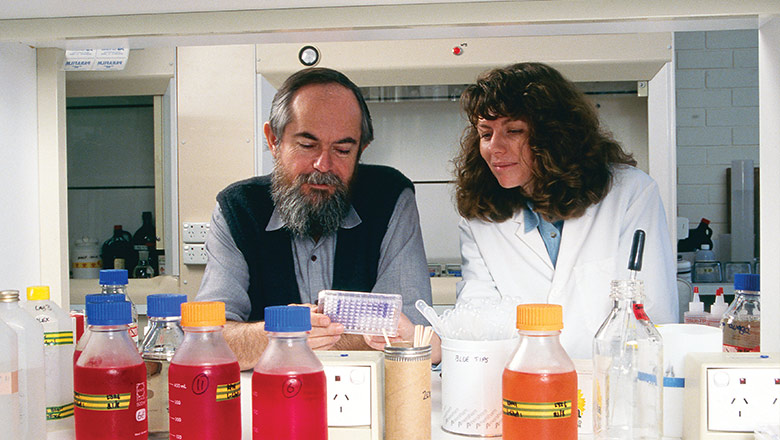Search
Research
High fractional exhaled nitric oxide and sputum eosinophils are associated with an increased risk of future virus-induced exacerbations: A prospective cohort study.High fractional exhaled nitric oxide and sputum eosinophils are associated with an increased risk of future virus-induced exacerbations.
Research
Rhinovirus-induced asthma exacerbations and risk populationsAsthma exacerbations are heterogeneous conditions that involve the complex interplay between environmental exposures and innate and adaptive immune function
Research
Hierarchy and molecular properties of house dust mite allergensThe allergenic load of house dust mite allergy is largely constituted by a few proteins with a hierarchical pattern of allergenicity.
Research
Genome-wide association analysis identifies 11 risk variants associated with the asthma with hay fever phenotypePrevious analyses of family data from the Tasmanian Longitudinal Health Study provide evidence that this phenotype has a stronger genetic cause than asthma...
Research
Prenatal adverse life events increase the risk for atopic diseases in children, which is enhanced in the absence of a maternal atopic predispositionThere is evidence to suggest an association between prenatal maternal stress and the development of asthma or other atopic diseases in offspring.
Research
Prophylactic use of sublingual allergen immunotherapy in high-risk children: A pilot studyThese findings suggest that this modified version of SLIT should be considered for retesting of mucosal-based immunotherapy for atopic asthma prevention.

News & Events
Switch on the immune system earlyFindings by Professor Pat Holt revealed researchers had been heading down the wrong path in their battle strategy against respiratory allergy and asthma.

News & Events
Overseas trip will help unlock the asthma puzzleOne in ten Australians have asthma and Dr Kimberley Wang from The Kids Research Institute Australia is on a mission to find out what causes it.
News & Events
Volunteers needed for world-first trial to prevent asthmaAustralian scientists have today launched a world first research trial into a treatment that could prevent asthma in high risk children.
Research
Reduced Type-I Interferon by Plasmacytoid Dendritic Cells and Asthma in School-Aged ChildrenAllergic sensitization and reduced ability to respond to viral infections may contribute to virus-induced wheeze and asthma development in young children. Plasmacytoid dendritic cells (pDC) are rare immune cells that produce type I interferons (IFN-I) and play a key role in orchestrating immune responses against viruses.
